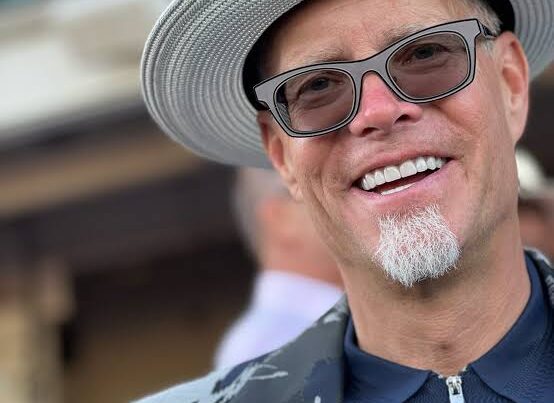Podcast: Play in new window | Download
Subscribe: RSS
How do you transform public awareness about your organization and engage more customers and members?

Todd Unger
Todd Unger is the Chief Experience Officer and SVP of Marketing & Member Experience at the American Medical Association (“AMA”). He has led digital-change initiatives at AOL, Time Inc. and the Daily Racing Form.
Todd is a transformational leader for the digital age, with the classic profile of a “productive disruptor.” He operates at the nexus of digital technology, content, product development, marketing, and business development. By bringing these areas together in unison, he’s been able to drive record growth in audience, customers, e-commerce revenue, and advertising sales across multiple digital businesses.
In his conversation with us, Todd shares the story of the AMA and how they are using digital marketing to transform their customer experience, share their message, and attract more physicians and industry service providers to become members of their association. They currently have approximately 250,000 members and engage 1.3 million unique visitors through their website per month.
We explore ways to connect more effectively with your target audience, listening carefully to what they really want, and how to tell your story in such a way that it inspires engagement and growth.
Key Takeaways
- When we talk of customer experience it’s really to create a proposition that is meaningful to people; to get it in front of the right target audience, and to create a seamless environment where people can opt in to your product or become a member.
- We serve physicians and are an ally to them.
- The AMA is the one organization that speaks nationally for every state, society, medical specialty.
- The AMA has about 250,000 members and there are 1.5 million physicians that they serve.
- We’re influencing the industry, for example, in terms of adopting the right health technology to support physician and patient needs.
- There’s a myth about physicians not being on social media and especially Facebook. That is wrong. Physicians are spending a lot of time on social media and talking with each other.
- One of our most effective platforms in terms of communicating with physicians and telling the story of the AMA is through Facebook, because it is super targeted.
- A lot of the conversations are in private groups so we work with ambassadors and ardent members and ask them to tell the AMA story, inject the facts into a discussion, and let people know that we’re on top of it.
- We work to maximize the distribution of the content we create, using scientific best practices to ensure we’re producing content that our audience is interested in.
- One of the things we do is provide compelling and tangible proof of what we’re achieving on behalf of patients and physicians.
- We’ll tell people about our advocacy work. For example, the AMA recently voted to remove all non-FDA approved vaping devices. It’s our responsibility to compliment the work that our media does to ensure the word goes out to physicians to enroll them in that movement.
- In addition to the deficit of knowledge people may have about what we’re up to, they may have a very different opinion of the AMA that came from years ago. So part of what we do is tell them that this is not the AMA you remember. This is a different organization and one that you should be part of.
- We’ve had the great fortune of having 3 consecutive women presidents. We are very mission-driven and diverse, and we are accomplishing all of the things that people really care about.
- A productive disrupter is a person who can lead a transformation without being a bull in a china shop, upsetting everything.
- We bring mission and membership together so people within the organization understand how it’s in everyone’s best interest to get the story out there.
- I spend a lot of time listening to customers (in this case, physicians) about what they want. For example, young physicians said that they were tired of seeing stock photos of doctors or actors. It led to one of the biggest insights since I’ve been at the AMA.
- These are real people making real change on behalf of their patients. They are heroes. We wanted to show it that way. If using real life photos do that, it’s a win.
- Now when students and physicians in residence walk into our events, they see the faces of their fellow physicians on big pillars or in the entryway. It really changes how they see themselves and the sense of power they feel as a physician and being part of this organization.
- We represent physicians with a unified voice. We remove the obstacles between them and patient care. We are leading the charge on the public health crises that physicians and patients face today and we’re driving the future of medicine.
- We’re about to close the 9th consecutive year of membership growth, especially in the physician category.
- We are reaching 1.3 million unique users per month, just through the AMA website.
- There are so many ways to segment an audience – believers, those in the middle, and those that will never come around. And then there are other layers of that, based on what people are interested in. That kind of innovation in our segmentation underlies a lot of the results that we’re seeing, because we’re talking to people about things that they care about.
- On average for every hour spent with a patient, a physician will spend two hours doing paperwork, sitting behind a computer screen. So we’re working with CMS to help reduce the burden around unnecessary documentation.
Connect With Todd Unger and the AMA
- Website: https://www.ama-assn.org
- Facebook: https://www.facebook.com/AmericanMedicalAssociation
- Twitter: https://twitter.com/AmerMedicalAssn
- Instagram: https://www.instagram.com/amermedicalassn
- Todd Unger LinkedIn: https://www.linkedin.com/in/toddunger1
- Todd Unger Twitter: https://x.com/toddunger
Did You Enjoy The Podcast?
If you enjoyed this episode please let us know! 5-star reviews for the Leaders Of Transformation podcast on Apple Podcasts, Spotify, Pandora or Stitcher are greatly appreciated. This helps us reach more purpose-driven entrepreneurs seeking to make a positive impact in the world. Thank you. Together, we make a difference!
Additional Episodes You May Like
- 346: Erik Won: Optimizing Brain Function Through Neuroscience
- 328: Stephen Carl: Conscious eCommerce & Your Digital Marketing Strategy
- 287: Brendon Lundberg: Changing The Way Chronic Pain Is Understood and Treated
- 259: Jacob Baadsgaard: Disrupting The Digital Advertising Industry
- 104: Adam Flores: How To 10x Your Business Online










